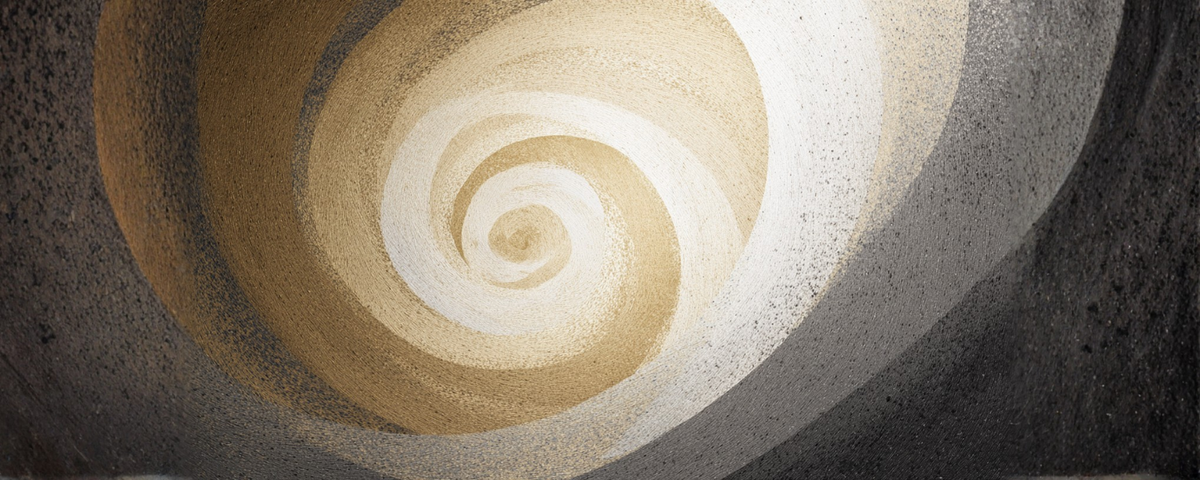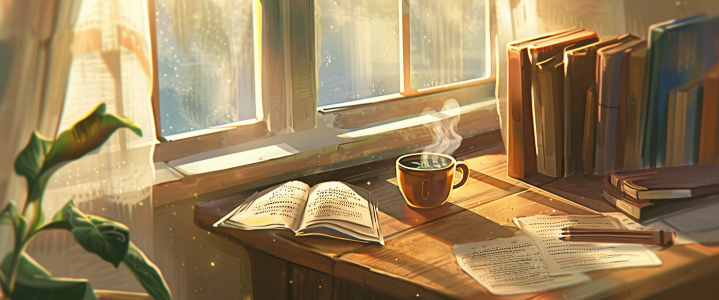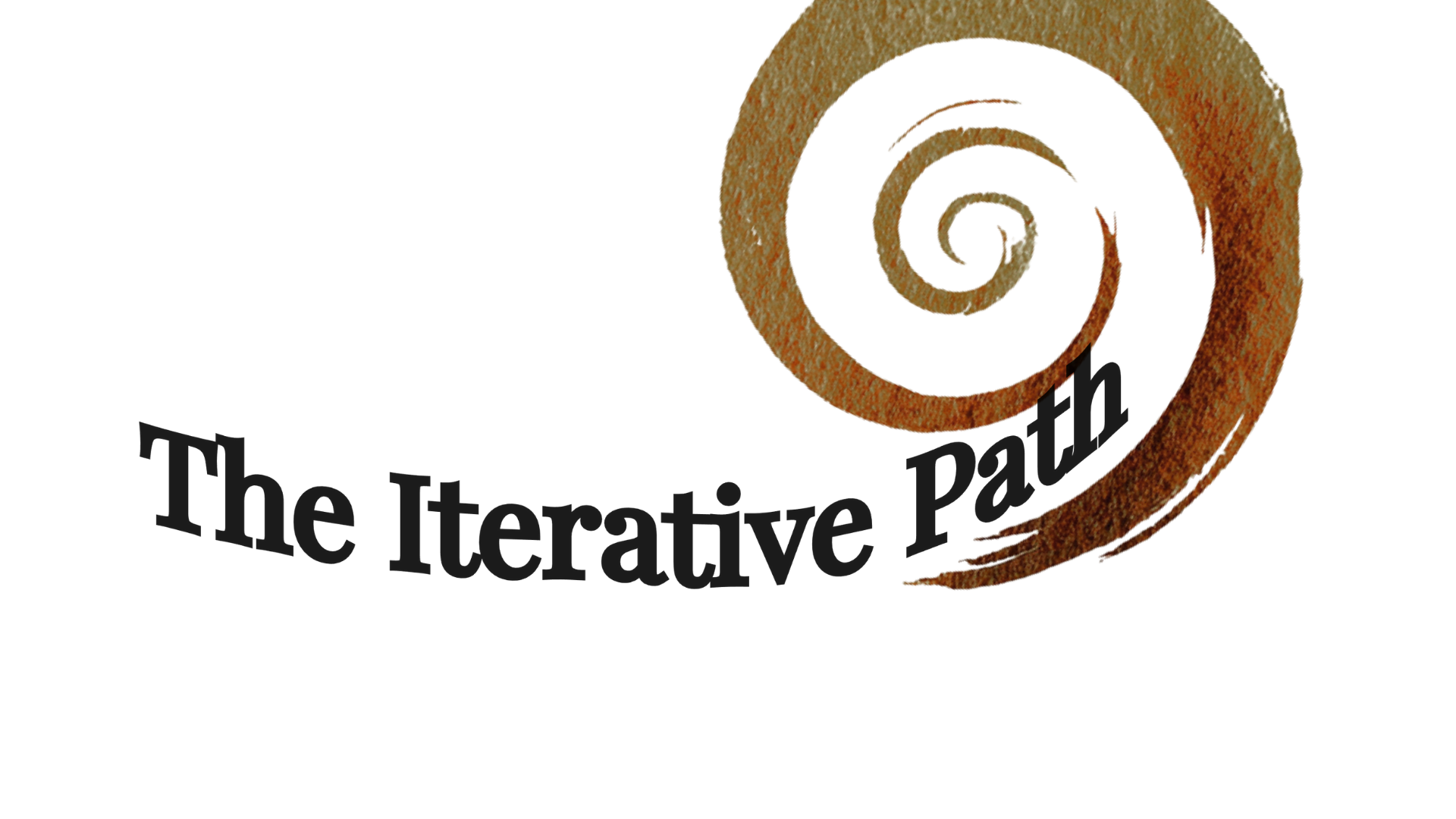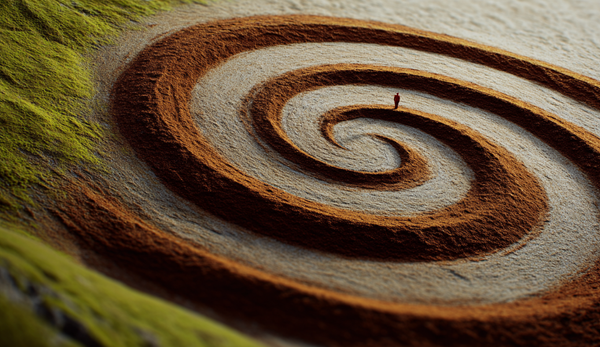The Iterative Path of Self-Reinvention

The art of living is iterative.
The Unmapped Terrain — The Silence After Structure
Freedom, at first, is a strange quiet. The hum of a weekday morning without obligations feels both generous and hollow. The kettle hisses, the mug leaves a faint ring on the desk, the smell of peppermint tea. The air doesn’t move; the light doesn’t signal anything to begin. I sat at my desk with tea cooling beside me, aware of the silence where structure used to be.
For years, I’d mistaken momentum for meaning. Meetings and deadlines had given my days their rhythm and, by extension, their justification. Without them, I felt exposed, as if I’d stepped off a map that had defined me more than I ever realized.

I used to think I wanted this kind of freedom: unclaimed hours, free time. But when the calendar emptied, I discovered how much of my identity had been scaffolded by being needed; by belonging to the machinery of productivity. There’s a peculiar vertigo in no longer being scheduled, a subtle panic beneath the surface calm. Culture praises liberation, but it rarely teaches us how to bear it. We know how to chase goals, not how to inhabit open space.
The silence isn’t peace; it’s an audition for a new kind of discipline. It asks whether I can live without the constant hum of external validation, whether I can build rhythm without the old metronome. In that pause, I began to see that freedom isn’t a reward for effort - it’s the raw material of self-design. Aristotle might have called this the search for the mean - discipline as harmony, not control.
“It was supposed to feel like liberation. Instead, it felt like silence.”
Leaving the known world isn’t the leap. It’s what comes after, when you have to find your footing again.

The Myth of the Leap — Why Change Isn’t Cinematic
Movies end on the moment of decision: the resignation letter dropped on a desk, the suitcase slammed shut, the door closing behind a braver self. What they never show is the Tuesday after, when the rush subsides and the ordinary world remains. The dishes still need washing; there are doctors appointments, and the inbox still fills. The air feels no different, only thinner. Real change rarely announces itself. It accumulates in small negotiations. Fear and curiosity don’t duel; they negotiate. The leap makes good cinema, but poor psychology.
The cultural myth of the leap flatters our hunger for resolution. We want the arc that breaks cleanly from the past, the cathartic rupture that remakes us. But identity doesn’t reboot; it updates. Heraclitus said we never step into the same river twice, but what he left unsaid is that the river never stops needing to be crossed.
William James might call those crossings the experiments of will - tiny proofs that freedom can be practiced not promised. James described habit as “the enormous flywheel of society,” the stabilizing force that makes freedom usable. Reinvention, then, is less a leap than a reprogramming - a series of micro-iterations that gradually shift what feels natural.
When I stopped waiting for a single moment to transform me, I began noticing the quieter evidence of change: mornings that started earlier, impulses questioned before obeyed, curiosity outlasting dread just long enough to keep me moving. None of it looked heroic. It looked like making oatmeal instead of excuses. It wasn’t dramatic, but it was different, and different was enough.
We love the drama of the leap - the music, the defiance, the cinematic closure. But the leap is just punctuation. What comes after is the grammar of becoming: the daily decisions, the subtle adjustments, the small remaking that give shape to the next version of a life.
“The cinematic leap is a story about endings. Real reinvention is a story about returns. Each one, a decision to begin again.”
Once you stop waiting for the leap, you can start the slower, truer work of iteration.
Iteration as Identity Work — Becoming Through Adjustment
Change, in practice, is quieter than ambition suggests. It happens in the small redesigns: how you arrange your morning, which impulse you indulge, what you choose to ignore. A month passes and the pattern is unrecognizable in hindsight. I keep noticing traces of the old self. Browser tabs left open like ghosts of yesterday’s priorities. At first, the shifts feel random - new habits stitched to old reflexes, but gradually they start to cohere. You realize you’re not chasing an ideal self so much as testing versions of one.

William James and John Dewey saw identity as a process rather than a possession. The self, to them, was a moving equilibrium, a pattern held together by repetition and revision. James believed habit was not constraint but liberation - the scaffolding that keeps intention usable. Each act reinforces or rewrites the story of who we are. Systems thinkers would call this feedback; designers would call it iteration. Either way, the work of becoming isn’t to arrive at a final model but to stay in relationship with the evolving prototype.
I think of my life now as a series of design sprints. Each project, each week, even each morning routine is a version test. An experiment in correspondence between what I value and how I behave. Some prototypes fail fast; others mature quietly. Occasionally I sabotage the test - lose focus, scroll instead of write - but the loop still runs. That’s the mercy of iteration: it forgives repetition. Progress isn’t about perfection. It’s about precision, about seeing where the design holds and where it doesn’t.
“I’m not building a brand; I’m building a hypothesis about who I might become.”
Iteration is humbling because it keeps revealing the gap between intention and embodiment. But that gap is the work. To iterate is to accept that identity is never finished, only refined.
When you live as a prototype, uncertainty stops being a threat. It becomes information. And that’s where doubt enters the story.
Doubt as Data — Emotion as Telemetry
Doubt used to stop me cold: the blinking cursor, the stalled project, the whisper that I had no right to speak. Sometimes it wasn’t even words - just a tightening behind my ribs, a kind of static in the chest. My reflex was to silence it. To push through or distract myself until the feeling subsided. But the more I studied how systems work, the clearer it became: feedback isn’t failure. Every emotion carries information about how the system is running.
Now, when doubt appears, I try to read it. Is it telling me I’ve drifted from purpose, or that I’m stretching into something new? Some doubts point backward, they signal misalignment with what matters. Others point forward, they mark the edge of growth. The task is to tell the difference. Some days I still misread the signal, fixing what wasn’t broken or ignoring what was. But even misread data teaches pattern recognition.
In cognitive psychology, this is called appraisal. In behavioral terms, emotion is a variable in a feedback loop. Change the interpretation and the meaning of the signal changes too. Acceptance and Commitment Therapy takes a similar view: you don’t fight the signal; you note it, then act according to your values. Aristotle might call this phronesis, practical wisdom born not from theory but from attention.
I keep a simple practice: name the signal, locate the variable, design a micro-adjustment. If I’m anxious, maybe the input is uncertainty; the adjustment is form. If I’m discouraged, the variable is depletion; the adjustment is rest. The emotion becomes data for design.
“I used to treat doubt as an alarm to silence. Now I treat it as a dashboard to read.”
Data only helps if you design from it. And sometimes, that design becomes its own trap.
The Guardrails of Progress — Freedom With Form
We like to imagine freedom as boundless, but in practice it needs edges. A painter without a frame eventually muddies the canvas. I learned this the hard way - endless drafts, endless options, no sense of arrival. Structure, I used to think, was confinement. Now I understand it as containment: the form that keeps energy usable. The trick is to build containers porous enough for air, but firm enough to hold intention.

Freedom without form dissolves into drift. Aristotle would have called this the loss of telos - purpose as direction. To act freely is not to do whatever you want but to align choice with aim. The Stoics said the same thing more sternly: discipline is the architecture of freedom. But Aristotle’s mean matters here too. Discipline as harmony, not punishment. The tone matters, though. When it’s imposed, it feels like control; when designed it feels like stewardship.
So I built rails that let me stay free. Two, in particular, keep me honest. The first is intention - knowing what I’m aiming at beyond the metrics or moods of the day. The second is measurement - having a way to see whether I’m moving toward that aim. Without both, self-direction collapses into self-deception.
Every Sunday evening, I run a Weekly Integrity Check: What did I actually do? Did it serve what I said I cared about? What needs to adjust? It takes ten minutes and saves me from weeks of quiet drift.
Adaptation isn’t always virtuous. It becomes rationalization the moment it serves comfort instead of purpose. Sometimes I can’t tell whether I’m adapting or avoiding - whether changing course is evolution or escape. I tell myself that iteration requires flexibility, but some pivots smell like fear. When I notice that scent, the faint metallic tang of avoidance, I stop, breathe, and ask the harder question: what am I protecting myself from? The answer usually names the next piece of work.
“My wife once asked if I’d ever stop redesigning myself long enough to enjoy it.” I didn’t have an answer, just a half-smile and another notebook open on the desk. Reinvention may be solitary in practice, but it is tested in relationships.
“Adaptation becomes rationalization the moment it serves comfort instead of purpose.”
Structure moves you forward. Patience keeps you from mistaking movement for arrival. But the space between effort and evidence can stretch longer than expected.
Money, Meaning, and Moral Patience — Working Through the Lag
One night I opened my banking app and saw the same number I’d seen for weeks. No movement. No income. Just the quiet arithmetic of uncertainty. I stared at the screen until it blurred, then laughed too loudly, half disbelief, half defense. The smell of burnt toast drifted from the kitchen; I’d forgotten the bread again. This was the cost of designing life on purpose, the stretch between conviction and solvency. For a moment, I felt embarrassed by my own optimism, as if belief itself were naive. Heat climbed into my ears, a small confession of doubt.
It’s easy to feel principled when the bills are paid, harder when the balance sits at zero and meaning can’t cover groceries. That’s when the idea of moral patience found me - not as virtue signaling, but as survival strategy. To wait well, I realized, is its own discipline.
Money moves on delay; purpose accrues slowly. Seneca warned against judging progress by its speed, and behavioral economists would agree: we overvalue immediacy, undervalue compound effect. Some would argue patience is just self-deception - a pretty name for fear of change. Maybe sometimes they’re right. But I’ve learned that persistence, even misguided, reveals what still matters after the illusion burns off. The lag between effort and evidence is where most people abandon the experiment. But the lag isn’t failure - it’s incubation.
Moral patience is not passivity. It’s the active steadiness of continuing to act in alignment when proof is absent. Scarcity shades easily into cynicism, and the work is to stay just this side of either. Patience becomes a form of moral strength: fidelity to what you said mattered, even when the world withholds validation.
Practically, I separate my measures. Creative work is reviewed weekly; financial progress monthly. That distance protects the signal from the noise. I build smaller wins into the near term - publishing something, finishing a draft, helping one client. Each confirms motion even when money lags behind meaning.
“I’ve spent most of my life trading time for money. Now I’m learning to trade patience for value.”
Faith begins when you persist without immediate proof, and some days, persistence feels indistinguishable from foolishness.
The Iterative Faith — Trust in Process Over Prediction
Faith begins when you persist without immediate proof. I used to think faith was confidence in outcomes - the certainty that something would work. Now I think it’s fidelity to process, a trust that the act of returning holds its own kind of grace.
The same desk that once felt like exile has become a companion. The silence that used to taunt me now feels like space. Change doesn’t announce itself; it accumulates quietly around you, until one evening you realize you no longer feel like a fraud inside your own life. That realization doesn’t arrive as triumph but as peace - a steady pulse of rightness, fragile and real.
Kierkegaard wrote of faith as repetition: the courage to renew belief in the face of uncertainty. James called it the will to keep acting as if growth were possible. The Stoics practiced it as equanimity; Buddhists as the return to breath. Taleb might call it antifragility, gaining strength through stress rather than despite it. However you name it, the gesture is the same - the daily return to what matters, despite not knowing where it leads.
This, I’ve learned, is the quiet heart of reinvention. Each return is a vote for the future self you hope to justify. Each small act of fidelity - a line written, a plan refined, a morning begun again - turns uncertainty into motion. Sometimes that motion feels so slight I mistake it for stillness. But stillness, too, can be a kind of momentum, the body remembering how to wait without surrender.
So I end my days with a simple ritual: a note of what I learned, one small gratitude, one breadcrumb for tomorrow. It’s a way of saying to the future, I’m still here, still willing. And on the nights when I can’t find faith, I borrow it from repetition itself - the small, defiant grace of trying again.
“Iteration is faith in motion.”
Nothing final. Nothing finished. Just the steady warmth of continuity.

The Work Continues
Every version of me thought it was the final one. Each believed it had found the lasting rhythm, the true shape of the work. But the longer I’ve lived inside this experiment, the more I see that being wrong was the real teacher. Every misfit plan, every half-finished draft, every return revealed another angle of who I could become. What felt like failure was often just a rehearsal for coherence.
Progress hides up close. From within it, all you can see are the seams and revisions. Only with distance do you notice that the drafts have been converging - not toward perfection, but toward coherence. There’s mercy in that realization: the self doesn’t need to be flawless to be faithful. What began as correction has become care.
I no longer chase completion. Continuity feels like meaning now. To wake, to reenter the process, to test again - that’s the quiet privilege of being alive and still in motion.
“The art of living is iterative. And the work continues.”


